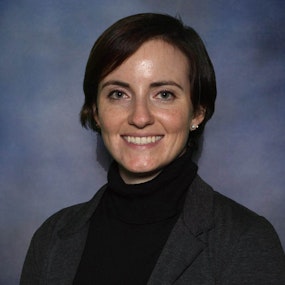ROBERT JOHNSON:
This is the award-winning Public Health Review Morning Edition for Thursday, August 31, 2023. I'm Robert Johnson. Now, today's news from the Association of State and Territorial Health Officials.
JOANNE MCCLURE:
Since there's only one state that's passed legislation authorizing overdose prevention centers, we wanted to dig a layer deeper and see if there are other states that are considering similar legislation
JOHNSON:
ASTHO's JoAnne McClure is talking about a project that tracks legislation to authorize overdose centers in some states across the U.S.
MCCLURE:
They're designated spaces that people can go to to use pre-obtained drugs under the safety and support of trained personnel. Globally, there's about 100 sites in over 60 jurisdictions, and in the United States, there's currently two recognized sites in operation, both in New York City,
JOHNSON:
ASTHO has developed a new interactive website that gathers information about various legislative proposals and presents it in an easy-to-read format.
MCCLURE:
ASTHO, with the support of CDC's Overdose Data to Action cooperative agreement, wanted to develop reports, as well as an interactive resource, to help visualize not only the legislation around overdose prevention centers, but in collaboration with harm reduction, statutes and regulations that are currently in place.
JOHNSON:
So far, only Rhode Island has approved overdose centers, but McClure says many other states are debating them.
MCCLURE:
We captured about 30 bills that were at least introduced in nine states. And these bills broadly authorized overdose prevention centers or they authorized workgroups that would develop action plans to be able to outline how the centers could operate.
JOHNSON:
We've got the link to ASTHO's Public Health Legal Mapping Center in the show notes.
Today is International Overdose Awareness Day. Oregon is addressing all aspects of the crisis. Dr. Laura Chisholm is with the Oregon Health Authority.
LAURA CHISHOLM:
If we don't take a systems approach, and look at the drivers, like what's causing that worst case outcome, you're we're not really going to bend the curve, or really make the progress that we'd like to, eventually, at a population level.
JOHNSON:
According to Chisholm, partnerships are a big part of the solution.
CHISHOLM:
We have regional and local partnerships that are covering 23 out of our 36 counties. And those folks are working to improve local systems and partnerships, doing a wide variety of prevention work. We also provide funding to community-based organizations based on their local priorities.
JOHNSON:
The work changes all the time. And that's one of the challenges facing Chisholm and others working in overdose prevention,
CHISHOLM:
Specifically related to the rapid evolution of this work, you have to stay flexible, you have to stay on your toes. And so that means the cycle for the work is much more rapid. Now, I used to work in chronic disease, we would do five- or 10-year plans. Right now, we're looking at updating our plans and communication information quarterly, maybe every half-year, but things are happening really, really quickly and we have to stay ahead of it or at least on top of that.
JOHNSON:
Read more about Oregon's work using the link in the show notes.
Also today, stigma punitive policies, and discrimination can deter pregnant people from treatment for substance use disorder. Learn how to address these concerns in an ASTHO webinar scheduled for Tuesday, September 26. You can hold your seat in the event using the link in the show notes.
Finally, this morning, a tranquilizer used by veterinarians is making its way into the drug supply. O'Keyla Cooper explains.
O'KEYLA COOPER:
The U.S. is facing a significant overdose crisis with more than 100,000 deaths in 2022. Federal authorities warned that xylazine, a veterinary tranquilizer, is infiltrating the drug market, posing risks to users and complicating overdose prevention efforts. State health agencies are advised to collaborate with stakeholders to assess xylazine presence and local drug supplies. Read the full blog article by clicking the link in the show notes.
JOHNSON:
Before we go, just a reminder to follow us on this podcast player. Doing so will deliver a new episode of the newscast to your mobile device every weekday at 5 a.m. This is the nation's only daily report dedicated to news about public health, so make sure you get every newscast as soon as possible.
That'll do it for today. We're back to wrap up the week tomorrow morning with more ASTHO news and information. I'm Robert Johnson. You're listening to the award-winning Public Health Review Morning Edition. Have a great day.






